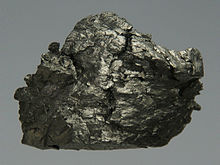WHAT METALS ARE MAGNETIC?
Types Of Magnetic Metals
Ferromagnetic, Paramagnetic and Diamagnetic metals are the three types of metals which interact with magnetic fields. The metal that is strongly attracted to magnets whereas the rest are not is Ferromagnetic. Paramagnetic is also attracted by metals but very weakly. Diamagnetic metals repel the magnet, even though the force is very weak.
In the presence of a magnet, different materials react very differently. Ferromagnetic metals such as Iron, Nickel, and Cobalt are strongly attracted to magnets. There are some metals that are repelled by magnets. Other materials may be weakly attracted as well. Being exposed to magnets which can be magnetized by themselves occur in Ferrous metals. They'rs not only attracted to magnets.
Ferromagnetic Metals
Iron, Nickel, Cobalt, Gadolinium, and Dysprosium are the main ferromagnetic metals. The attraction is strong enough to be felt if you hold a piece of ferromagnetic metal near a magnet. They're also used to make permanent magnets. They're able to keep possession of their magnetic properties after the magnet is removed. Strongly attracted to magnetic fields.
Below from left to right: Gadolinium and Iron


Ferromagnetic Alloys
Ferromagnetic alloys are alloys such as steel that contains ferromagnetic metals within them. Steel is a combination of iron and several other metals. It's harder and stronger than iron. Due to the hardness of steel, it can retain its magnetism longer than iron. Steel will eventually lose its magnetic properties when heated to a high temperature. This will also happen with ferromagnetic metals such as nickel.
Ferrimagnetic Materials
Ferrites, magnetite, and lodestone are what is included in ferrimagnetic materials. As well as having oxides of other metals, these all have iron oxides as their main component. First discovered magnetism using lodestones. Lodestones is magnetite and are naturally magnetized. Ferrimagnetic materials are similar to ferromagnetic, but with a weaker and lower magnetic attraction. Magnetite is attracted to magnetic fields but doesn't normally become magnetized itself.
Paramagnetic Metals
When the magnet is removed it doesn't retain magnetic properties. Paramagnetic metals are weakly attracted towards a magnet. Copper, aluminum, and platinum are included in paramagnetic metals. Sensitive instruments are needed to measure the magnetic attraction. Paramagnetic substances have a much weaker and lower attraction towards magnets than ferromagnetic materials. Magnetic properties of paramagnetic metals are affected by temperature. When they're very cold aluminum, uranium, and platinum become more attracted to magnetic fields.
Below for left to right: Copper and Platinum

Diamagnetic Metals/Materials
Diamagnetic materials are repelled by a magnetic field. A repulsive force caused by an applied magnetic field that creates an induced magnetic field in them, which is in the opposite direction. In contrast, paramagnetic and ferromagnetic materials are attracted by a magnetic field. Materials which are repelled by a magnet such as zinc, mercury, lead, sulfur, copper, silver, bismuth, etc, are known as diamagnetic materials. They act in the direction opposite to that of an applied magnetic field. When placed in a very strong magnetic field, they are slightly magnetized. Due to the orbital revolution and axial rotation of electrons around the nucleus are in opposite directions and cancel each other are the two relatively weak magnetic fields in diamagnetic materials. Diamagnetic materials have little applications in electrical engineering due to permanent magnetic dipoles(a pair of equal and oppositely charged or magnetized poles separated by a distance) being absent in them.
Below from left to right: Bismuth and Zinc




